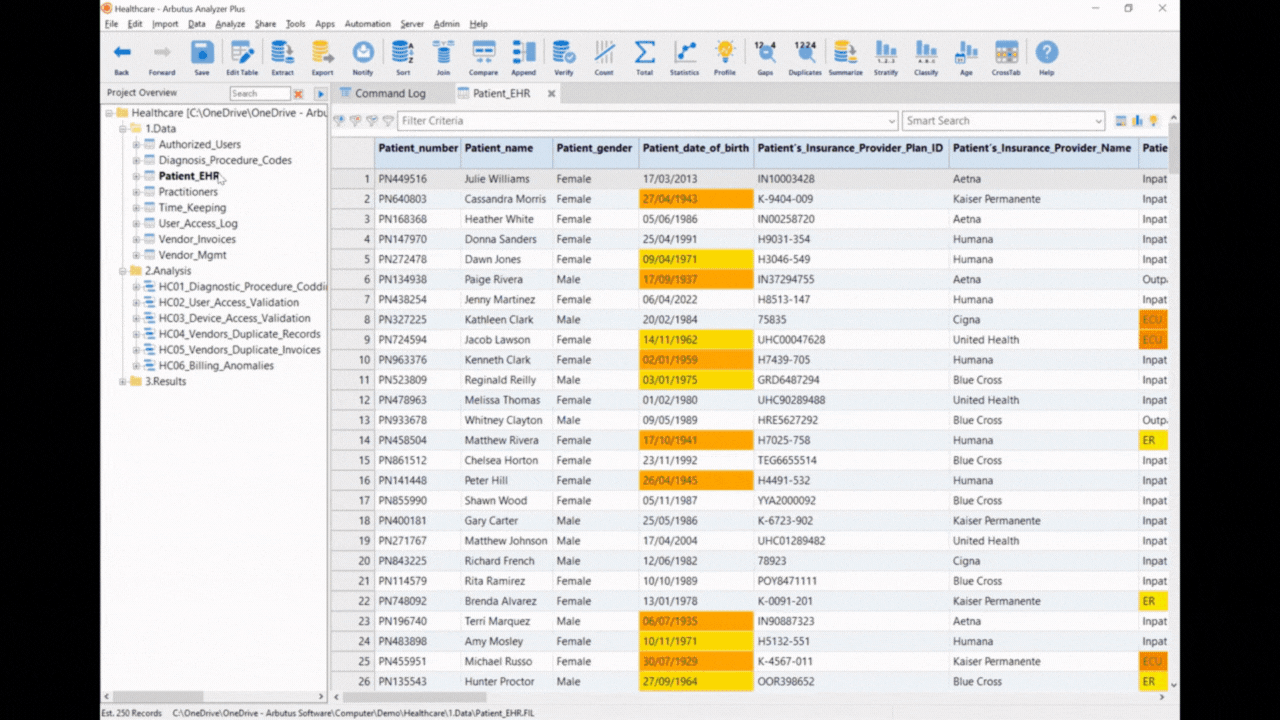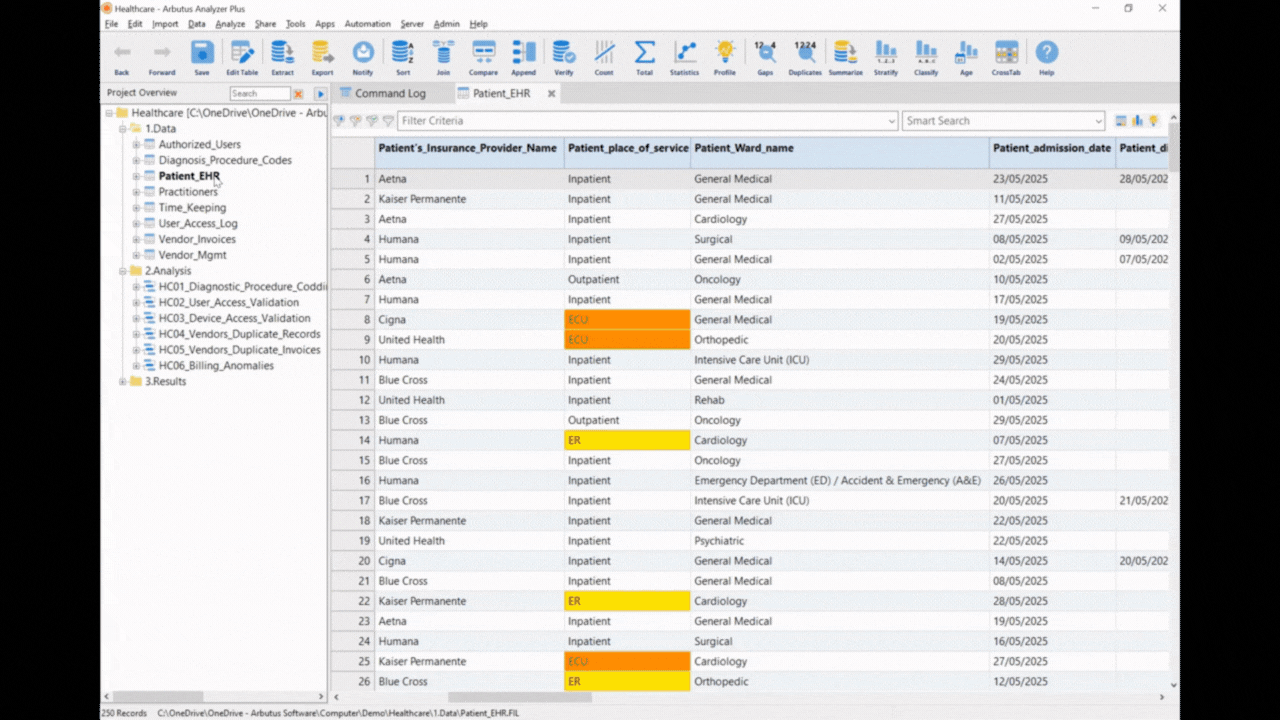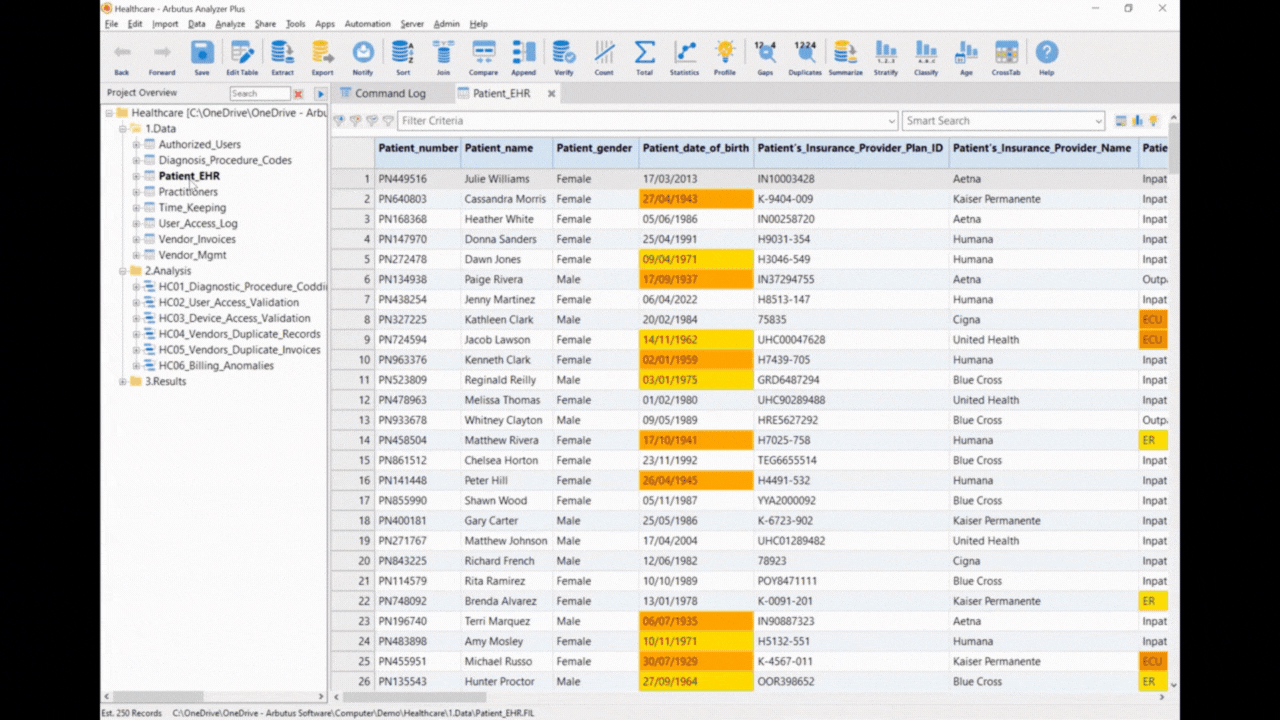Accelerate Healthcare Transformation with Smart Analytics
Transform data into actionable insights for clinical and operational success.
How Analytics and Automation Are Transforming Healthcare Care Delivery and Operations
Advanced data analytics, automation, and AI are transforming how healthcare organizations deliver care, manage operations, and make decisions. From identifying at-risk patients earlier to automating routine tasks like scheduling and billing, these technologies are improving speed, accuracy, and patient outcomes. Hospitals and clinics are also using AI-powered tools to support diagnostics, predict patient needs, and optimize resources.
This shift is helping reduce costs, enhance efficiency, and allow healthcare professionals to focus more on patient care rather than administrative burdens. Effective use of analytics, automation, and AI in healthcare requires coordination across technical, operations, and governance teams. IT and data analysts enable secure systems and insights, while operations teams play a key role in validating test results of analytics and ensuring day-to-day processes are followed properly. Risk, audit, and compliance teams promote responsible use, and cybersecurity ensures data remains protected, creating a safe, data-driven healthcare environment.
-— Scott Koeing, Mayo Clinic
Healthcare Analytics
Fill in your details here to download the eBook
The Arbutus Technology Advantage
Improving Patient Outcomes
Analytics helps clinicians identify risk factors, predict health issues, and personalize treatment. This supports earlier interventions, reduces readmissions, and improves overall care outcomes.
Enhancing Operational Efficiency
Healthcare organizations use analytics to streamline workflows, optimize staffing, and manage supply chains. These insights improve day-to-day efficiency and enhance patient experiences.
Supporting Compliance and Risk Management
Analytics enables real-time monitoring for compliance, fraud detection, and regulatory adherence. This proactive approach helps manage risk and maintain readiness.
Protecting Data Privacy and Cybersecurity
Advanced analytics detects suspicious access and system vulnerabilities, helping protect sensitive data. This ensures regulatory compliance and maintains patient trust.
Strengthening Financial Performance
Financial analytics uncovers billing issues, tracks reimbursement trends, and highlights cost drivers. This helps improve revenue, control expenses, and support sustainable operations.
From Burnout to Breakthrough: Tackling Healthcare’s Most Pressing Challenges with Data-Driven Solutions
The healthcare sector is facing a critical workforce shortage, with high levels of burnout among clinicians and support staff. This shortage is impacting patient care quality and increasing operational strain. At the same time, administrative burdens and complex billing systems are reducing the time healthcare professionals can spend with patients.
Cybersecurity threats are intensifying, as healthcare organizations remain top targets for ransomware and data breaches. The growing use of digital tools and connected devices has expanded the attack surface, making data protection a top priority. Financial pressures, including rising costs and declining reimbursements, are also squeezing margins, especially for smaller and rural providers.
Technology integration presents both opportunities and challenges. While digital transformation is essential, many healthcare systems struggle with interoperability, workflow disruption, and regulatory uncertainty—particularly around AI and data use. These hurdles highlight the need for robust, data-driven solutions that can enhance care delivery while managing risk.

Understand the 6 Key Risk Areas That Impact the Healthcare Industry and Professionals
Healthcare organizations face six critical risk areas that threaten long-term stability and care delivery: cybersecurity, data privacy and vendor risks, workforce shortages and burnout risks, financial pressures, technology and AI risks, regulatory and compliance risks, and operational disruption risks.
These risks can impact everything from patient safety and clinical outcomes to financial performance and public trust.
Key stakeholders, such as leaders in Compliance, Risk, Internal Audit, IT, Clinical Operations, and Finance, must take coordinated action to manage these risks effectively. By doing so, they can ensure continuity of care, meet regulatory requirements, and protect both patient data and organizational reputation.
Proactive risk management powered by data and audit analytics enables faster, smarter decisions. With real-time insights and automated testing, healthcare organizations can detect issues early, reduce disruptions, and stay focused on delivering high-quality, patient-centered care.

Risk Areas for Healthcare Industry and Professionals
Cybersecurity, Data Privacy and Vendor Risk
Failing to protect patient data can lead to high-cost data breaches, ransomware attacks, HIPAA violations, and operational disruption. The effects - regulatory fines, patient distrust, disrupted care, and reputational damage, can be catastrophic.
Implementing layered cybersecurity measures (e.g., intrusion detection, patch management, encryption) and training staff builds resilience. Organizations that are mature in cyber risk management not only reduce incident impact but also sustain care delivery and regulatory compliance, reinforcing trust and operational integrity.
Potential Analytics and Testing
- Analyze user access logs to detect unauthorized access or unusual activity patterns in Electronic Health Record (EHR) systems, e.g. after-hours logins or users accessing records outside their job roles.
- Test for incident response times and remediation steps following security alerts or phishing attempts.
- Monitor third-party vendor access to patient data for risk exposure.
- Verify mandatory security training completion and effectiveness.
- Track and report on patient complaints related to data security or breaches.

Workforce Shortages and Burnout
Unaddressed staffing shortages and burnout can lead to clinical errors, delays in care, increased agency use, and compromised morale—impacting care quality and escalating costs.
By implementing workforce analytics, engagement initiatives, flexible scheduling, and upskilling programs, organizations can stabilize staffing levels, enhance job satisfaction, reduce errors, and improve both clinical outcomes and cost-efficiency.
Potential Analytics and Testing
- Track staffing ratios and correlate with patient volume trends to identify understaffing risk areas.
- Analyze overtime hours and consecutive shifts to flag departments at high burnout risk and/or unauthorized overtime trends.
- Analyze absenteeism and sick-leave trends to identify rising trends in unplanned absences that may signal workforce. dissatisfaction, illness, or mental health concerns.
- Monitor turnover rates and exit interview trends for early indicators of morale issues.
- Assess internal hotline data for staff grievances.
.gif)
Financial Risks / Financial Pressures and Reimbursement
Inadequate reimbursement, rising operational costs, and financial mismanagement can lead to service cuts, delayed investments in technology or staffing, and even facility closures—especially in rural or small healthcare systems. Long-term instability can threaten access to care for vulnerable populations.
Sound financial planning, strategic cost control, and proactive revenue cycle management can enhance sustainability. Managing financial risk allows healthcare providers to invest in innovation, expand services, and continue delivering quality care even in volatile economic environments.
Potential Analytics and Testing
- Monitor days in accounts receivable and claim aging trends for early cash flow risk indicators.
- Identify discrepancies between billed services and services rendered (e.g., medical record comparison).
- Analyze billing and coding controls for accuracy and compliance, including fraud.
- Identify cost outliers in labor, supplies, specialty drugs by flagging abnormal spending patterns in staffing, consumables, or drugs, which may signal inefficiencies, procurement issues, or fraud.
- Identify which insurance claims are getting denied the most and why. This helps spot patterns - like missing info or common coding errors, so they can be fixed and more claims get paid.

Technology & AI Risk
Overlooking risks in digital initiatives can introduce device vulnerabilities, data integrity issues, AI biases, integration failures, and care disruptions
With strong governance—such as robust testing, bias audits, secure integration, and vendor management—digital advancements can improve efficiency, care delivery, and patient experience while keeping control and safety top of mind.
Potential Analytics and Testing
- Analyze usage logs to detect unusual patterns, overrides, or errors in AI decision-making
- Use time-series analysis to analyze data points collected at specific time intervals to spot changes in input data patterns that could affect AI predictions.
- Use analytics to check for bias in AI results by comparing diagnostic accuracy across different patient groups (e.g., age, gender, race). This helps ensure fairness and consistent care quality.
- Analyze the data (quality) used to train AI models to confirm it's complete, up-to-date, and includes a wide range of patient cases. This helps prevent errors due to missing or outdated information.
- Use analytics to check if data is flowing correctly between AI tools and EHR systems. This helps catch issues where patient information may be missing or outdated in AI recommendations.

Regulatory and Compliance Risks
Non-compliance with HIPAA or CMS, billing rules, telehealth privacy, and AI guidance can lead to audits, billing denials, sanctions, and legal exposure .
By embedding compliance monitoring, leveraging regulatory intelligence, and ensuring audit follow-through, organizations reduce exposures, sustain reimbursement flows, and demonstrate trust and transparency in regulatory environments.
Potential Analytics and Testing
- Test compliance training completion rates and flag overdue or non-compliant individuals.
- Analyze claims data for patterns indicating potential billing fraud or upcoding.
- Test billing codes against payer and CMS guidelines to review billing data to confirm that procedures are coded correctly according to payer-specific and Medicare rules, reducing denial risks.
- Identify policy exception usage and rationale by analyzing data to understand when and why standard procedures are bypassed, looking for systemic issues or non-compliant workarounds.
- Track reportable incidents and resolution timelines.

Operational Risk
Without operational controls, clinical errors, supply chain failures, fraud, and malpractice claims can disrupt care, elevate costs, and damage trust—even if less headline-making .
By deploying real-time monitoring, process mapping, incident analysis, and fraud detection, healthcare providers can reduce avoidable harm, improve throughput, reduce losses, and strengthen overall delivery efficacy.
Potential Analytics and Testing
- Analyze downtime incidents and recovery durations across critical systems and departments.
- Test supply chain data for inventory stockouts of essential medical equipment or drugs.
- Track maintenance schedules and service ticket resolution times for facility equipment.
- Validate controls on vendor compliance and management.
- Track patient safety metric trends over time to analyze infection rates, readmissions, falls, and similar KPIs to understand how well operational controls are functioning.






